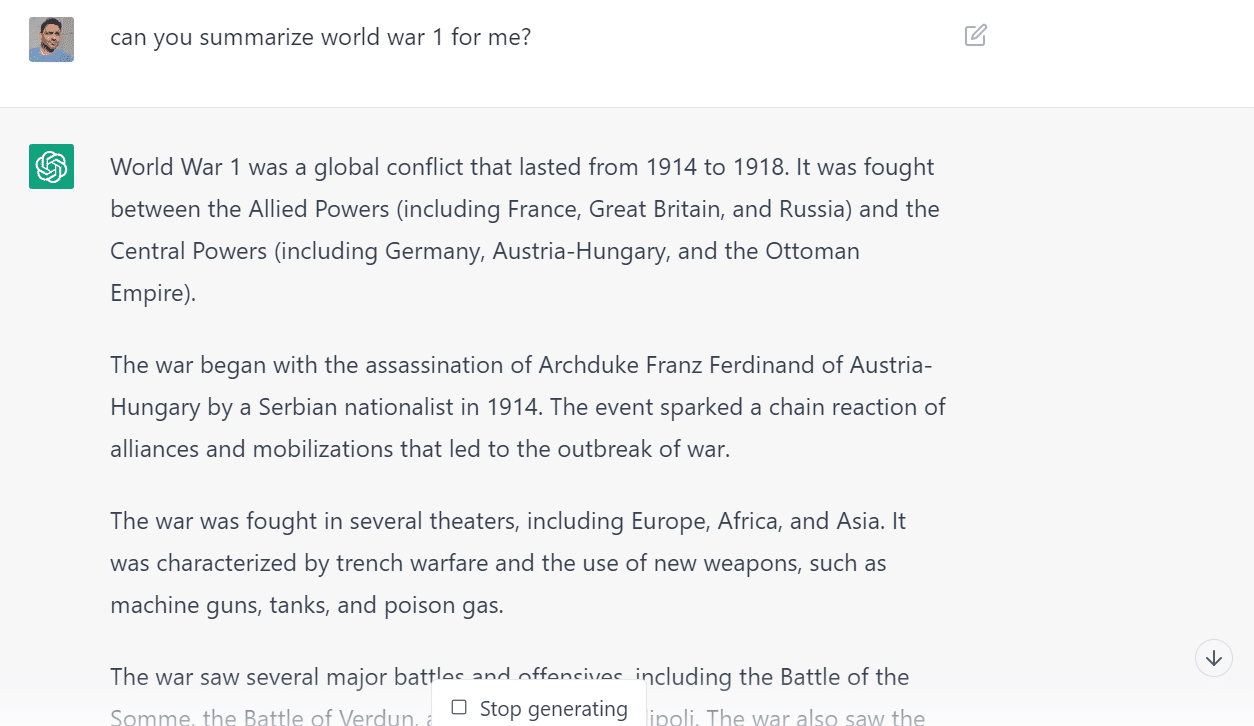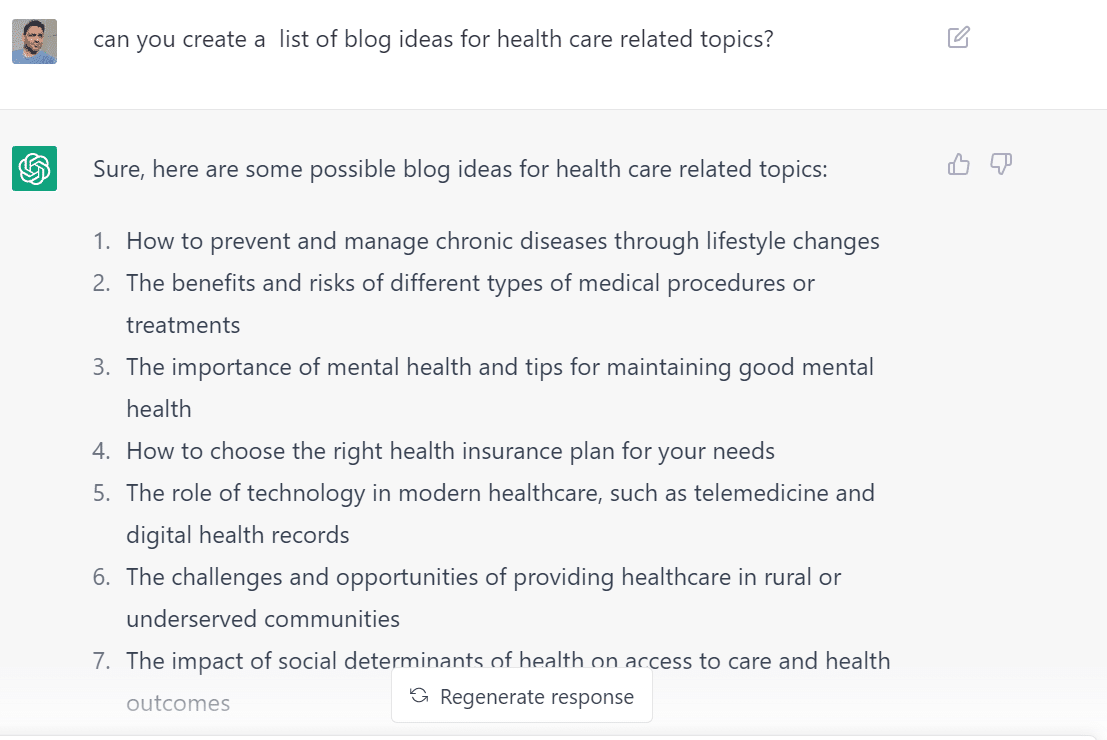AI is a powerful tool that will reshape how people and businesses interact online. As the focus on this new technology grows off the back of public interest in tools like ChatGPT and major announcements from Google and Microsoft, we will likely see an increasing number of AI-enabled technologies over the coming months and years. As the number of tools in this space continues to grow, understanding the limitations and possibilities of each one is vital to implement them effectively.
Creating guidelines and practices of your own will help keep internal use in check while also helping you use AI tools responsibly.
To use AI technology successfully today, marketers should consider how it can affect brand trust, the legal limitations, what guidelines to implement, and how it can assist with daily tasks.
Opportunities and Effective Uses of AI
AI is a powerful tool with myriad applications still being uncovered and refined. Amsive Senior Director of SEO & Head of Organic Research Lily Ray gave an in-depth look at what kind of role AI can play for SEO, but its uses extend beyond just one area of digital marketing.
AI is a great tool for summarizing information
However your business implements it, it’s important to remember that AI-generated content is at its most effective when providing high-level, big-picture-style information. It does a great job contextualizing larger pieces to help inform you of subjects, but it tends to falter when providing more nuanced information. Of note, in documented incidences, it has provided inaccurate information in its responses.
As a general research tool, AI tools like ChatGPT’s ability to comb through vast amounts of information and summarize what it found can dramatically cut back on the amount of time you would otherwise spend on manual searches. Some potential use cases for this include:
- Generate summaries from audio and video transcriptions, including:
- Internal recorded meetings
- Industry presentations
- Podcasts that go in-depth on a topic
- Interviews
- Generate summaries of technical documents
- Understanding the function of lines of code
- Generating summaries of historical or recent events

Adjusting prompts and rephrasing inputs can help narrow your search fields to a certain degree, and these tools will occasionally ask for additional context in order to generate the desired results. The output should be treated with the same scrutiny as something like Wikipedia—excellent for a general understanding, but additional sources should be used for more complete knowledge.
Assist with repetitive and time-intensive tasks
AI can take on the form of a digital assistant when it comes to completing daily tasks. The use cases vary between industries, but some examples include:
- Generate summaries of content
- Generating product or category descriptions
- Generating alt text for images
- Brainstorming content ideas
- Assess the tone of a written piece to determine how formal or informal it comes across
- Draft personal statements for personal or professional applications
- Draft sample interview questions to prepare for an upcoming interview
- Creating an outline for a blog post, research paper, presentation, etc.

It’s important to note that AI is extremely limited when it comes to writing any form of code. While it can serve in an assisting capacity, any lines it generates should be reviewed by someone who understands how and what it is being used for.
Spark creative inspiration
While publishing AI-generated content on its own is only sometimes advisable, it can be extremely useful to improve your own content. Rather than using it to build the foundation of a piece of content, consider using it to supplement your writing or creative process. Whether you’re stuck on a thought or sentence that you can’t find the right way to phrase or if you’re looking for a springboard to start a new project, AI tools can be used to overcome that block.
- Generate ideas for transition sentences between sections
- Generate color palettes
- Storyboard a project with generated images
- Create mockups for projects
- Create demo presentations
- Touch up images to remove blur, isolate subjects, adjust lighting, etc.
Using AI tools as a way to supplement your own work can be a fine line to tread. It is extremely effective as a base for creative concepting, but using it to create entire projects from start to final product can cross ethical and potentially even legal lines.
“As an agency, you can lean on AI, but don’t put everything on the AI,” said Amsive Executive Creative Director Asaf Shakham. “Create the concept, transcribe or augment scripts, but it should always start with your own assets.”
Incorrectly Using AI Can Affect Brand Trust and Impact SEO
Treat AI-generated content with the same level of scrutiny as any other piece of content your business would publish. In its current state, the writing these tools can produce typically sounds assertive and confidently accurate. However, even the most sophisticated AIs are prone to plagiarizing the content it was trained on or even outright ‘hallucinating’ content—this is the term ascribed to when AI-generated content is nonsensical or flat-out wrong.
SEO impact
Publishing content with issues this severe can have a significant effect on your website, both in how it performs on search engines and how your audience views it. Search engines heavily penalize plagiarized content when it’s inevitably flagged. Plagiarized content won’t just drag down the specific pages it exists on either—your entire website will be penalized and potentially buried on SERPs, significantly impacting your ability to show up in front of anyone, let alone your target audience.
Effect on brand trust
Plagiarized and poorly developed content can have a serious impact beyond dragging down your website’s SEO. Brand recognition and audience trust are valuable and vital commodities, and publishing work that misses the standard your business sets for itself can quickly lead to mistrust about anything published on your website.
Both CNET and Men’s Health found themselves in hot water for their severely mismanaged use of AI generation, with CNET publishing plagiarized content and Men’s Health publishing medically incorrect information.
These websites earn attention by positioning themselves as experts in their respective fields—CNET is one of the premier tech review and information outlets in the nation, and Men’s Health is an internationally-recognized name for fitness, nutrition, and men’s lifestyle. While each outlet has reportedly paused the use of these tools, both have indicated they have no desire to give up on this type of content. It’s unclear how long this pause will be, but the short-term impact on their brands could be very detrimental.
Disclose your use of AI tools
Even with necessary checks and balances to review and update AI-generated content, it’s just as important to clearly state that your business is using this technology. While it isn’t necessary to mark every piece of AI-generated content as such, deploying this technology without making it clear to your audience that you’re using it could cause serious problems down the road.
The adoption and improvement of these tools will grow over time. The excitement surrounding AI is met in equal measure by skepticism, and transparency is a core part of establishing and communicating your use of these tools. If you’re implementing AI tools into your business practices, don’t do it behind closed doors or with only subtle nods to its existence.
By clearly stating which tools you’re using and why from the jump, it will be considerably simpler and easier to confront potential issues and complications in the future rather than needing to backpedal and explain hidden usage in the past.
Who Owns AI-Produced Content?
These legal limitations highlight the importance of using AI tools as a baseline and springboard for your projects rather than the creator of your end product. Using this technology to supplement your work and refine what you create independently is the simplest way to avoid trapping yourself in legal pitfalls and scrutiny.
The question of “Who owns this?” regarding AI-generated content is set to become a major legal battle in the not-too-distant future. It’s already here in some fields of this new technology. Getty Images recently filed a lawsuit against Stability AI, the creators of the AI art generator Stable Diffusion over “brazen infringement of Getty Images’ intellectual property on a staggering scale.” It isn’t the only AI-related lawsuit in the art world, and it stands to reason that we’re far from seeing the last.
The legal limits of these tools are far from set. There is no legal precedent for who owns the AI-generated content, and OpenAI has made it clear that its tools may generate similar or identical output for different people and prompts. While the content your prompts generate is technically yours, that content produced for another person is also technically theirs.
Establish and Adhere to Responsible AI Practices
As your business considers how it can use AI to supplement your workflow, it’s important to create and adhere to responsible AI practices. AI is opening new avenues and opportunities for how we all interact with online spaces, both good and bad. As your business takes steps down this path, you need to do so with intention and direction. Laying out how your business intends to use the tool and setting restrictions around where you shouldn’t use this tool can prove invaluable as its scope continue to grow.
Both Microsoft and Google have clearly outlined their responsible AI practices to keep the usage of their tools in check while also leaving room for them to expand over time. These can serve as strong guideposts for how to kick off your own business’s conversation around AI use.
Create a solid framework of guidelines for best practices and treat it like a tool, not an all-encompassing solution. Building effective guidelines for how your business can implement it while clearly defining the drawbacks and potential will allow you to integrate AI seamlessly into your daily workflow and avoid the numerous pitfalls that can come with this new technology.
Responsible implementation of AI into your business is only one part of a data-centric, performance-driven strategy, giving you the power to know more and do more. Dig deeper into consumer trends and how you can use them to refine your marketing strategies or let’s talk about how to achieve more for your marketing—and your business.
Additional author: Ryan Smythe, Content Manager






